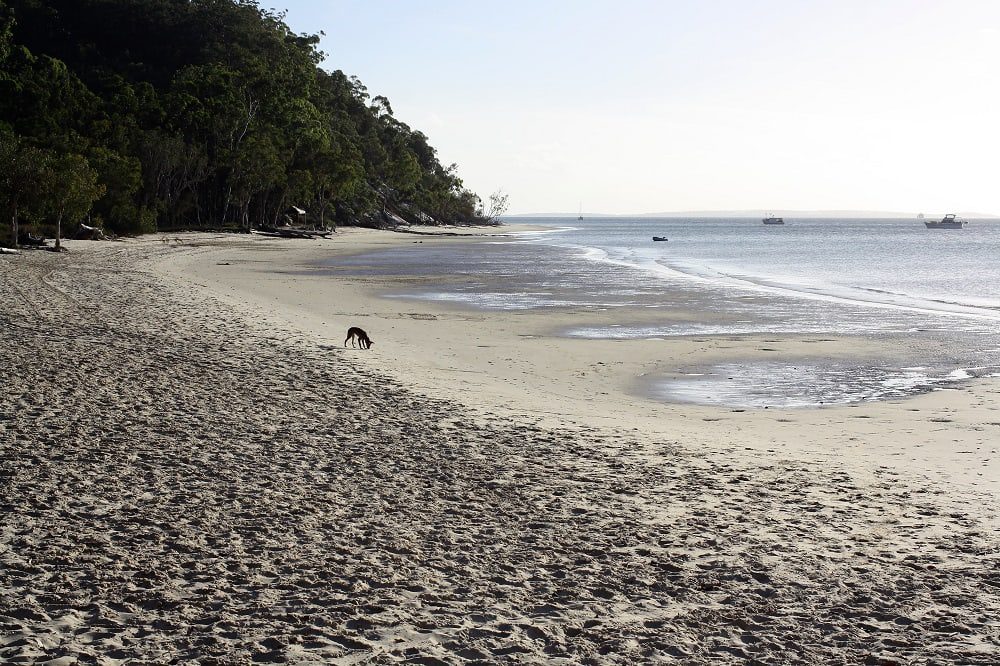From the water, it’s very hard to spot any buildings on Fraser Island – the world’s largest sand island. But beyond the mangroves, the long sandy stretches and the occasional pattering dingo, is one of the world’s most pioneering eco-resorts.
When the Kingfisher Bay Resort opened, 25 years ago, eco-tourism was certainly not the buzzword it is now,
“When it was first developed, it was before its time,” general manager David Hay tells KarryOn.
“The idea certainly didn’t resonate as much as it does now with the broader market.”
The German, Swiss and Scandinavians were interested, but the rest of the world took a little longer to catch up, Hay reveals.
Things have changed though. Now, environmental responsibility is an expectation rather than a pleasant extra, he says.
“People have higher expectations that tourism activities tread a bit lighter on the planet.”
As a result, the resort has come into its own. It’s standout feature is its ream of rangers who run a range of activities, according to Hay.
“The ranger activities give us the opportunity to explain a bit about Fraser and how the resort touches lightly on the environment,” he says.
“People go away with an understanding of how important what they’re looking at is.”
During our visit to the island, a ranger takes us on a bush walk around the resort itself and come across a hive of Australian bees, a lemon myrtle tree, cinnamon myrtle tree and much more. Lauren talks us through each plants traditional uses and even shows us how the local Butchulla people would bite the bottoms of the tiny bees off for a sugar fix.
But the site’s eco-tourism credentials are not just a superficial value-add for travellers. They are intrinsic to the resort itself.
Take the gentle curves of which every building is made, designed to respect the swooping sand dunes and soft lines of nature which surround it.
The vegetation has also been managed carefully with plants and trees moved to a nursery with GPS tagging during the construction process, so they could be put back exactly where they were.
Man-made lakes in front of the resort were designed to replicate the types of lake seen on the western coast of the island, drawing a range of birds and plant life. As these plants have grown up, the resort has almost disappeared, Hay explains.
“It’s a 1,000 bed property, but it’s hard to tell it’s even there,” he said.
Then, of course, there are the island’s most famous inhabitants, the dingoes. There is some debate over whether the dingoes found here are among the most “pure” given their isolation from other breeds of dog, unlike those found on the mainland. Either way, they are one of the island’s biggest drawcards and also one of its biggest tourism challenges.
When we spot one of the wild canines trotting down the deserted stretch of beach just by the resort at dusk, his skin is stretched tightly across his ribs. Passing tourists approach to take photos and succumb to the urge to toss him a few of their scraps.
The fact is that they are naturally lean creatures, Hay tells us. And by feeding them, tourists are actually impacting their natural instincts to hunt and stay wary of human contact.
Awareness of the animals and how best to co-exist with them has improved dramatically since a nine-year old boy was attacked and killed by two dingoes in 2001, according to Hay.
“The problem is that when they are on holiday, some people just switch off and are not keen on learning,” he says.
But a fence erected to keep dingoes out has been a game changer as has the resort’s partnership with the National Parks and Wildlife Service to educate staff and visitors by passing on key messages about the island’s nature.
“Now seeing a dingo around the property is really an exception rather than a rule,” Hay says. But from time to time, the smart scavengers find their way through and so guests are urged to be vigilant and not to feed them.
Guest are also urged to tread lightly when visiting other parts of the island such as beautiful Lake Mackenzie. They are asked to bring all rubbish back with them and also not to wear sunscreen when going in the water.
Another interesting feature of the hotel is its worm farm which processes the sewage from the resort, turning it into compost, much of which is shipped back to the mainland although some is used to fertilise a herb garden used for cooking by the resort’s kitchens.
Doesn’t get much more sustainable than that.








